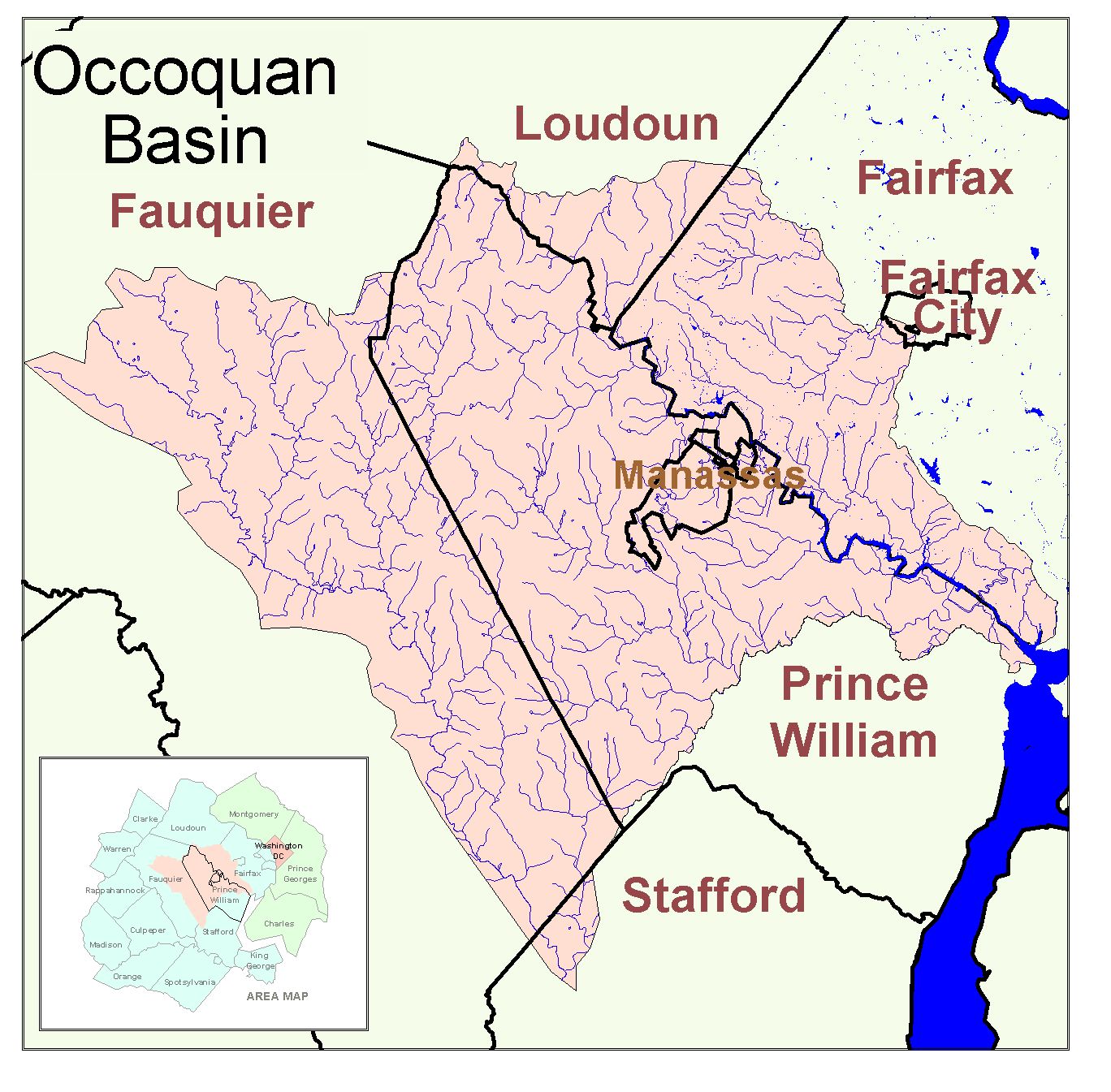George Mason University Campus Fountain, July 2010
©EOP
This morning I was looking for some local materials to include in the water course, and I chanced upon a good (if too small a scale) land-use map for the Occoquan Watershed (I hope to find a similar map at a bigger scale for use in a Power Point). Our Fairfax City house sits just slightly to the Potomac watershed (small streams draining directly into the river) side of the interfluve dividing the watersheds of the Potomac and the Occoquan. The GMU campus sits on the interfluve,and a part of the campus is on the opposite slope with water draining into small streams feeding the Occoquan (which itself eventually, just southeast of its eponymous town, flows into the Potomac).
Bull Run, one of the Occoquan's tributaries is very famous, for its small valley at the edge of Manassas City was the site of two of the more vicious battles of the Civil War. At the time of the Civil War and until quite recently the almost 1550 square kilometer basin of the Occoquan was predominantly rural with farmlands, wooded areas and only a few small towns and the small city of Manassas. Since the 1970s and especially since 1990 the watershed has been rapidly urbanized with farm fields and pastures converted to townhouse projects and small "estates" along with the usual fast food and strip mall development. That has radically changed the timing and the quality of water run off into the Occoquan, for now much of the watershed is paved and impermeable even as urban uses add contaminants to the water flowing toward the river..
Prior to much urbanization the river became an important drinking water source supplying much of the urban water in Prince William County (including Manassas and Manassas Park cities) and some of the water consumed in Fairfax County, the two largest counties by population in Virginia. Altogether nearly 1,200,000 people are connected to water supply systems which use some Occoquan river water. A substantial dam impounds a tributary of the river and creates Lake Manassas, a water supply reservoir for its namesake city. Downstream another dam impounds the Occoquan Reservoir supplying much of Prince William County and large parts of adjacent Fairfax County. While other sources of water are used by both counties, the Occoquan could in an emergency supply most users. A bit further downstream yet near the town of Occoquan is one of the largest sewage treatment facilities in the Washington, DC metropolitan area, sending treated water into the Occoquan just before that river joins the Potomac.
A crucial element in the urban water supply of Washington, DC's Virginia slurbs, the Occoquan is also a major recreation resource for the area, and the undeveloped lands along its banks provide a substantial amount of open space. Unfortunately the stream is badly polluted in places, and runoff from developed areas makes it an endangered stream. The Prince William Conservation Alliance has an excellent webpage examining the issues of pollution in the Occoquan basin. The quality of water in the river is important for those of us condemned to live in Northern Virginia!
Watershed Map from Prince William Conservation Alliance.

